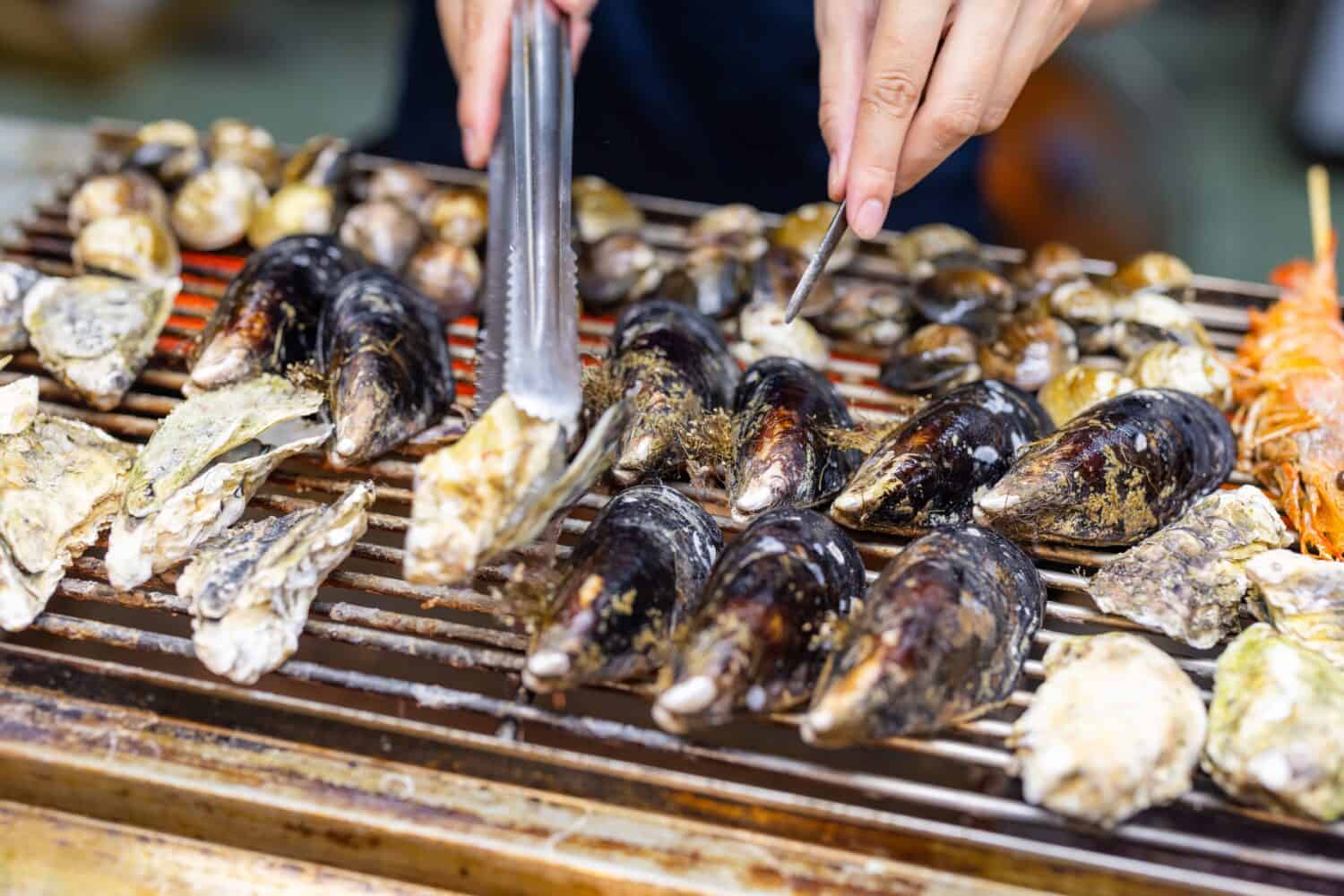Clams and oysters are two common forms of shellfish. Both are bivalve mollusk species, which means they have hinged shells that can open and close. Their shells protect the soft interior meat, which is the part that we eat. They share their species with other popular mollusks like cockles, mussels, and scallops. Other delicious cousins include cephalopods (squid and octopus) and gastropods (snails).
Clams and oysters are delicious additions to soups, chowders, stews, and stir-fries. They are also great on their own, steamed or grilled. Some people around the world enjoy raw clams, but raw oysters have a much broader fan base.
People who consume shellfish infrequently may have trouble telling clams and oysters apart. However, seasoned seafood lovers not only know the difference between these similar mollusks but also usually have favorite types of each. After reading this article, you can also differentiate clams from oysters and know which type is best for your dinner table.
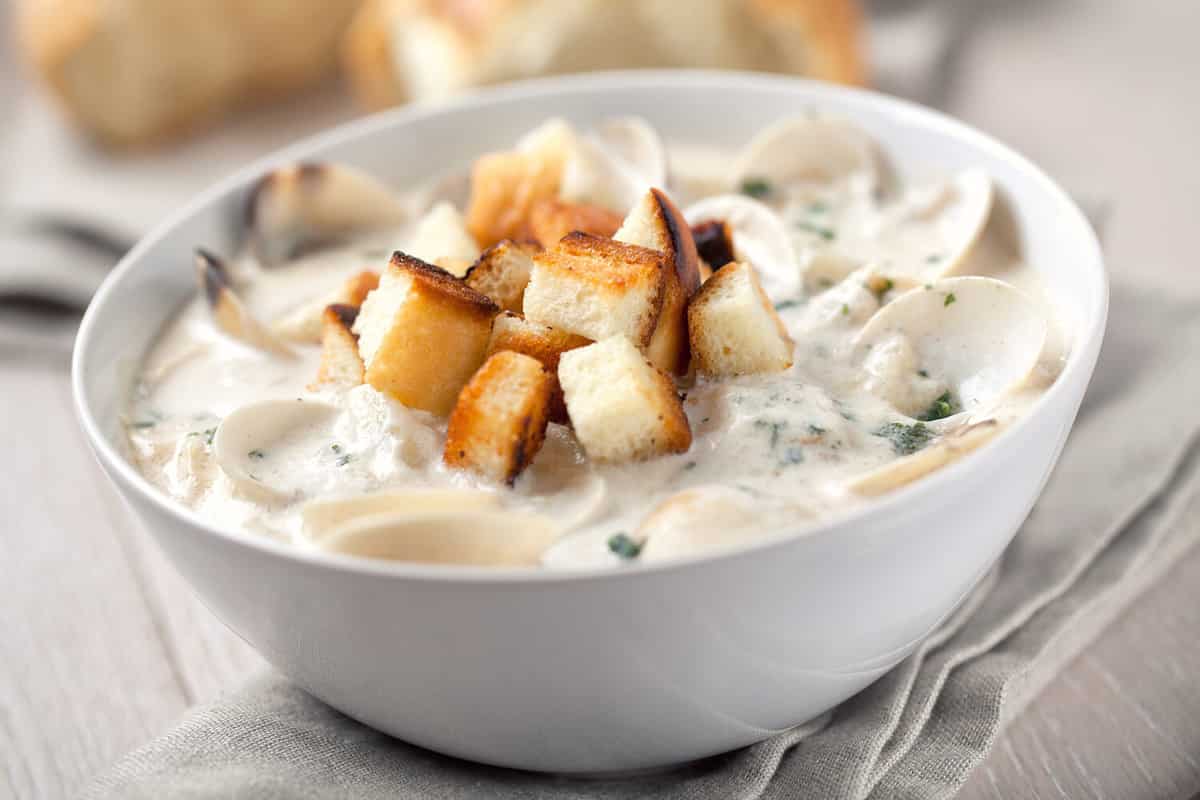
©foodstck/Shutterstock.com
All About Clams
Clam shells are oval, with equally sized halves, and are usually tan, brown, or white. Clams have a foot that helps them burrow under the sand, and the foot is not typically eaten. Clam meat is attached to the shell by a ligament that can be eaten, although it will be chewy.
Clams are filter feeders. This means they filter small bits of food from the water and excrete it back out through their gills. A single clam can filter 24 gallons of water per day.
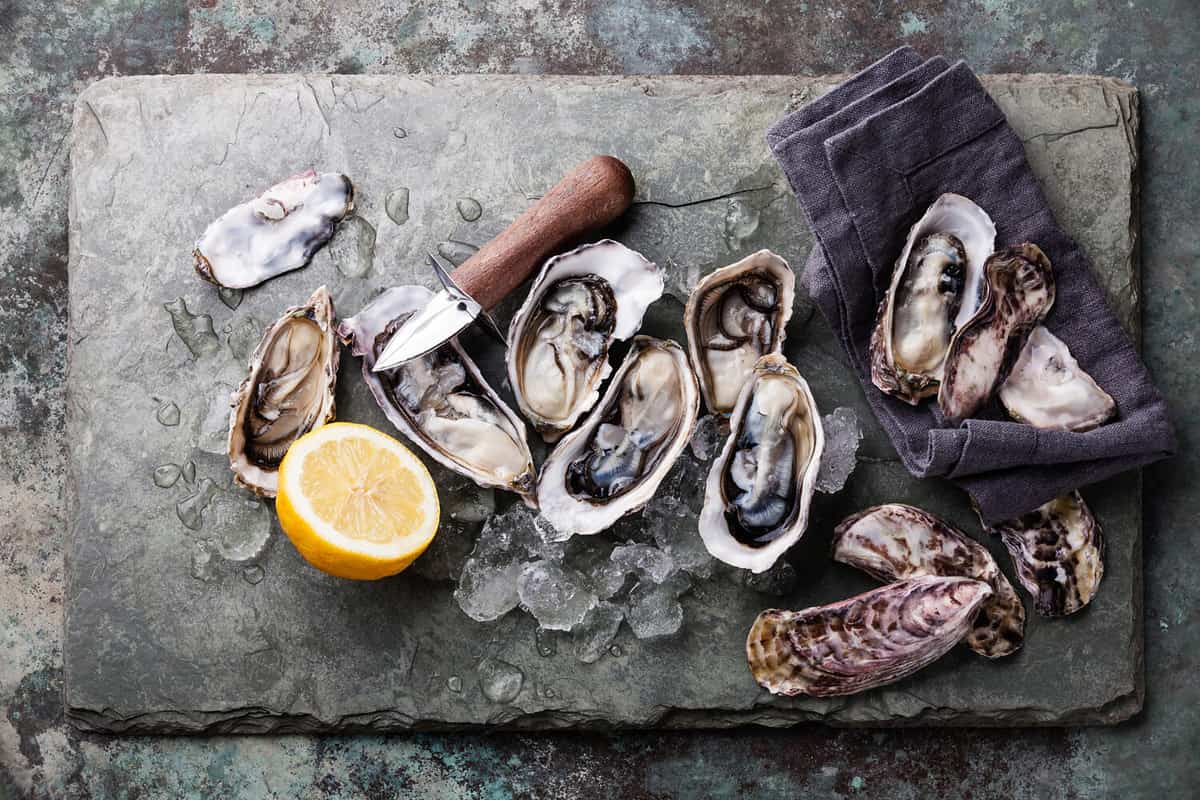
©Natalia Lisovskaya/Shutterstock.com
All About Oysters
Oyster shells have an oval shape with irregular edges. They have a rough texture and can be brown, grey, or white. Contrary to popular belief, not all oysters form pearls. It’s actually quite rare to find a pearl in a food-grade oyster. Like clams, oysters are filter feeders, and one can filter up to 50 gallons of water a day.
These bivalve mollusks tend to stay in one place throughout their lifetimes, often sticking to rocks beside other oysters in giant oyster reefs. Oysters can live up to 20 years, and they tend to take on the flavor of the water where they live. Oysters harvested from the east coast of the United States tend to taste saltier, while west coast oysters have a sweeter flavor.
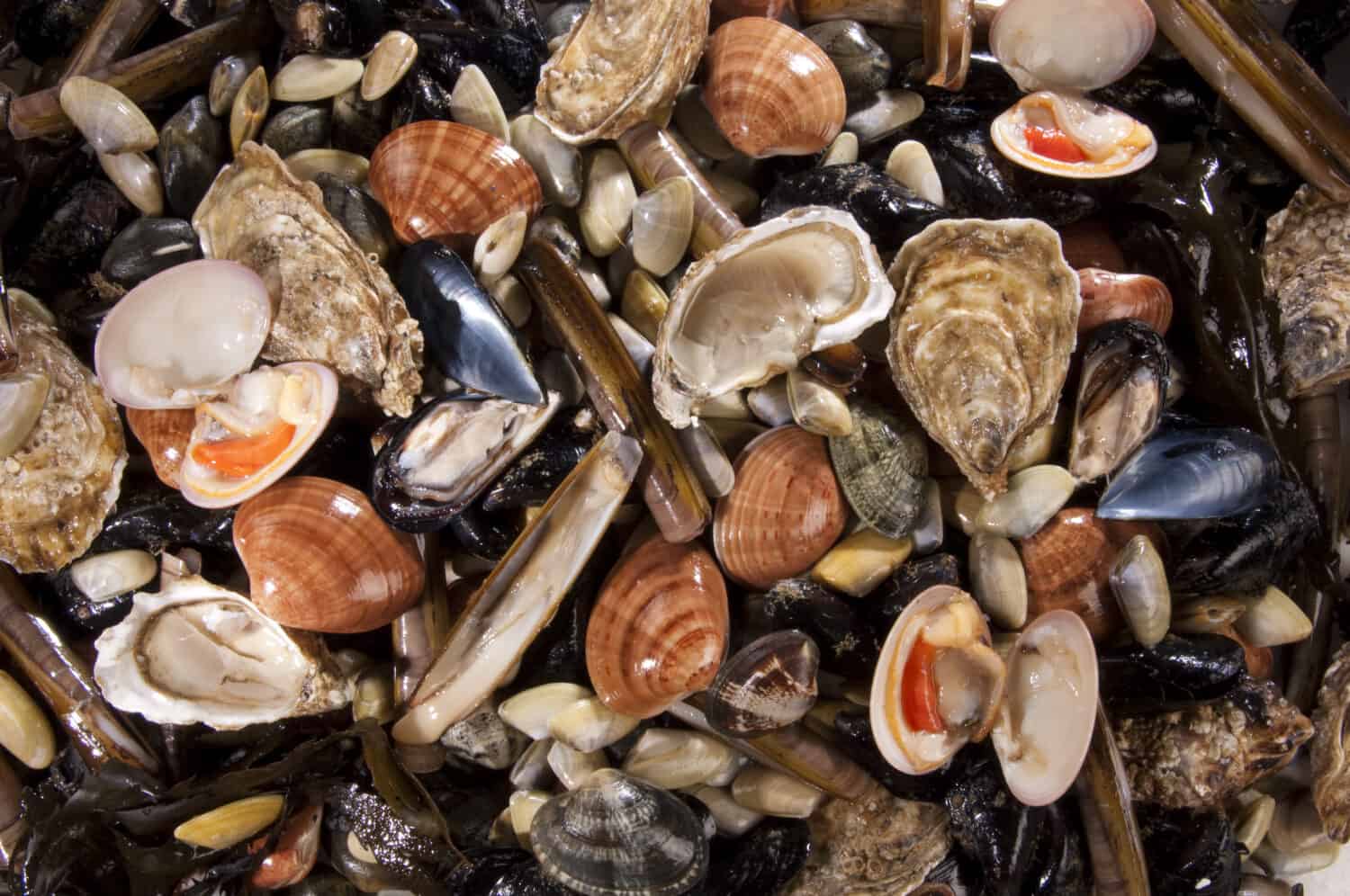
©Maurizio Milanesio/Shutterstock.com
Differences Between Clams and Oysters
| Clams | Oysters |
|---|---|
| Live in fresh water and saltwater | Live only in saltwater |
| Have smooth, shiny, equal oval shells | Have bumpy, rough, and irregular-shaped shells |
| Relatively inexpensive, common | Expensive, considered luxury seafood |
| Meat is somewhat rubbery and white or tan in color | Meat is more tender than clams and has a greyish color |
| Strong salty flavor | Buttery, briny flavor |
| Can be eaten raw but are usually cooked | Equally popular eaten raw or cooked |
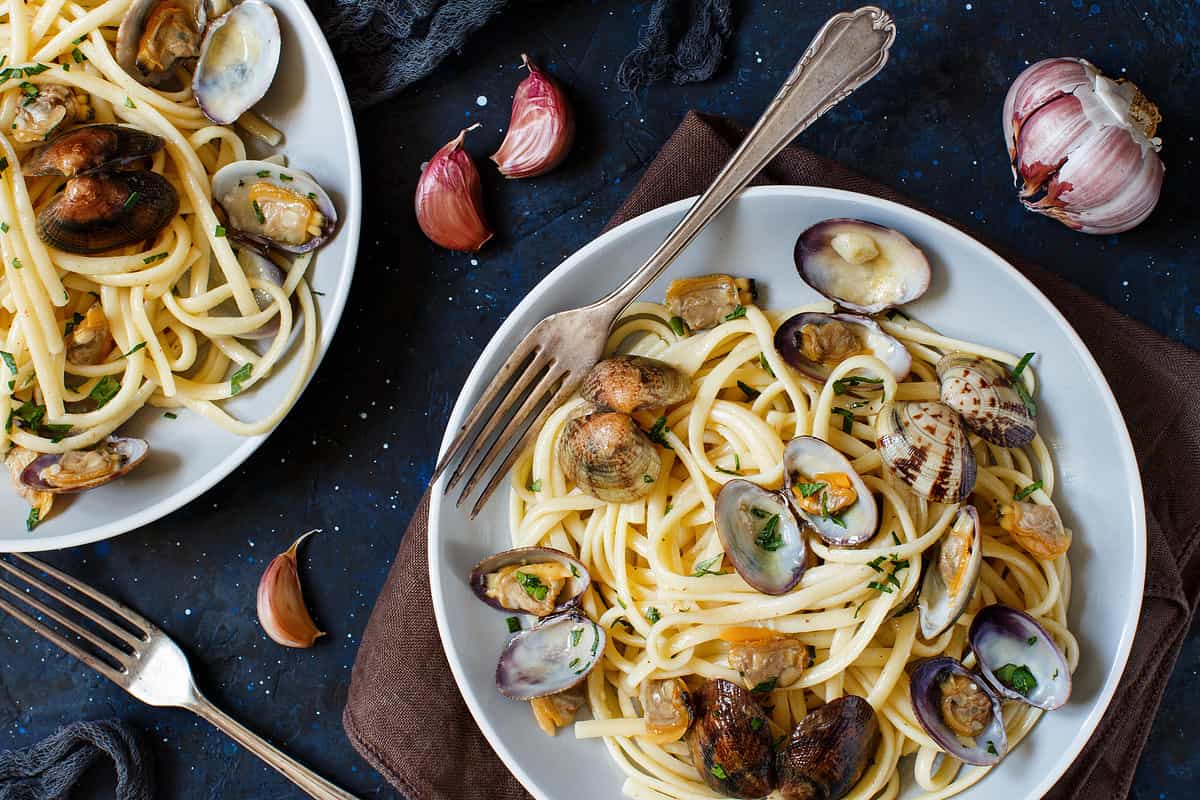
©iStock.com/Karisssa
Types of Clams and Their Characteristics
People generally separate clams into two categories: soft shell and hard shell. Soft shells are thinner and less durable than hard shells. Soft shell clams also have a harder siphon than hard shell clams, which makes them a little more difficult to remove before eating.
All types of clams have a similar flavor. Here are six common clams and how to tell them apart.
- Giant clams: The largest living bivalve mollusks can weigh over 100 pounds. They are considered a delicacy in France, Japan, Southeast Asia, and several Pacific islands. The meat is often eaten raw with lemon.
- Littleneck clams: Often considered the best-eating clam, these are just one or two inches in diameter. Their meat is tiny but very tender.
- Manila clams: Have shallow ridges and wide bands of purple, grey, and yellow on their shells. They measure between 3 and 8 inches across, according to age, and have an exceptionally smooth texture and sweet flavor.
- Ocean quahogs: Have thick, grey shells with growth rings that show the clam’s age. The interior is white with a purple border. These 4-inch clams have darker and tougher meat than many other clams.
- Pacific clams: Also called Pacific razor clams, they have oblong brown shells up to six inches long. The meat often extends past the shell’s edge and has a clean, sweet, and saline flavor.
- Razor Clams: Have long, thin, finger-shaped shells and razor-sharp valves. Also called bamboo clams and jackknife clams, they have a briny, mild clam flavor and firm texture.
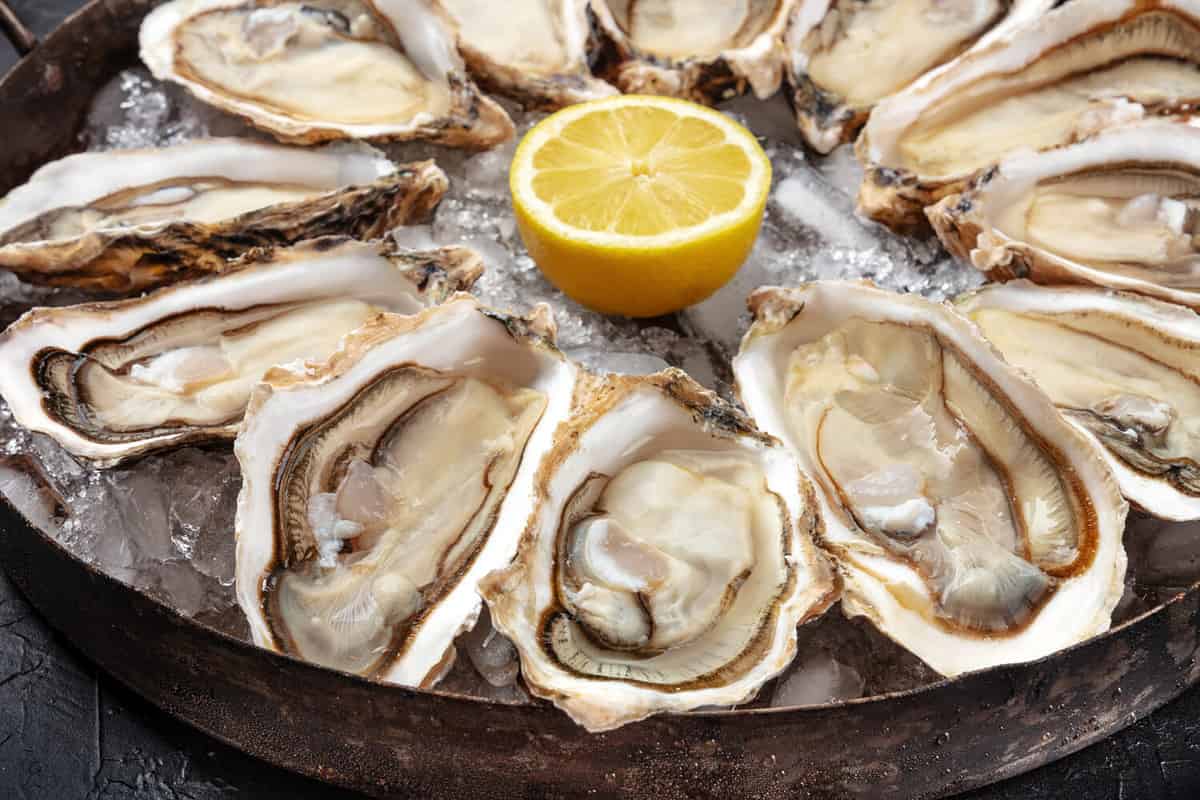
©Plateresca/Shutterstock.com
Types of Oysters and Their Characteristics
Oysters are separated into sub-species that can look and taste somewhat different. Here are four commonly consumed oysters and their characteristics:
- Blue Point oysters: Jokingly called “the Budweiser of oysters” because nearly everybody has had one, these common east coast mollusks have a flavor that balances salinity and minerality.
- Eastern oysters: Have a cupped brownish or greyish shell between 5 and 8 inches in length. They feature a brinier, saltier flavor than Pacific oysters.
- Olympia oysters: Are smaller, rounder, and more delicate than other Pacific oysters. They have a strong flavor with a metallic, briny taste.
- Pacific oysters: Have cupped, thick shells with a rough or sharp surface. They can grow up to 10 inches in length. They taste sweeter than eastern oysters.
In Summary
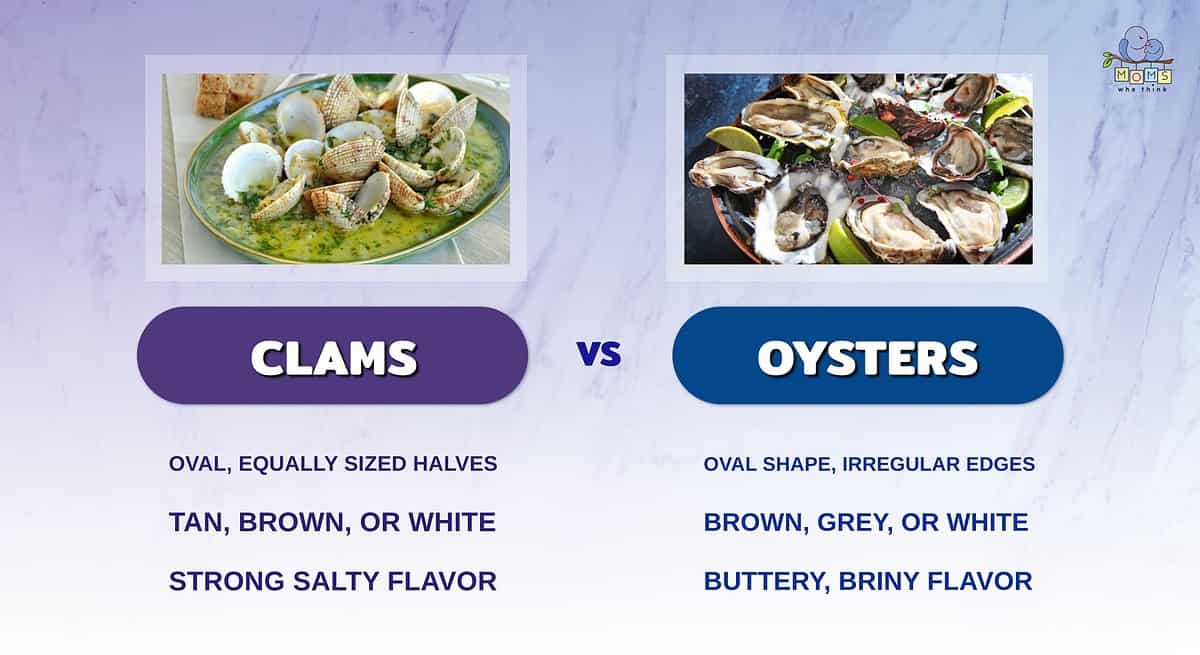
Clams and oysters share similar characteristics but significantly differ in flavor and texture. Both are readily available at most grocery stores in frozen and canned forms. Fresh oysters and clams are best when bought and eaten where they’re caught, but overnight shipping makes it possible to enjoy fresh seafood in more landlocked locations safely.
Print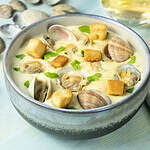
Creamy Fish and Clam Chowder
Ingredients
- 2 medium potatoes, cut into cubes (about 2 cups)
- 1 cup frozen corn
- 1 small leek, thinly sliced
- 8 ounces bottled clam juice
- 1/4 cup water
- 1/4 teaspoon dried thyme, crushed
- 1/4 teaspoon salt
- 1/8 teaspoon pepper
- 12 ounces evaporated skim milk
- 12 ounces fresh or frozen cod fillets, cut into 1-inch pieces
- 6 ounces canned minced clams
Instructions
- In a large saucepan, combine potatoes, corn, leek, clam juice, water, thyme, salt, and pepper. Bring to boiling; reduce heat. Cover and simmer about 10 minutes or until potatoes are just tender.
- Stir in milk.
- Add fish and undrained clams. Return to almost boiling; reduce heat. Cover and simmer for 3 to 4 minutes or until fish flakes easily with a fork. Do not boil.
Up Next
Recipe: Bread and Oyster Stuffing
Recipe: Creamy Fish and Clam Chowder
Snow Crab vs. King Crab: Taste and Cooking Differences
The image featured at the top of this post is ©leungchopan/Shutterstock.com.
